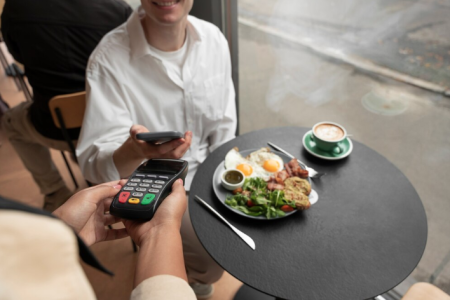'Sneaky' gratuity charge leaves woman out of pocket—are you a victim of this too?
By
VanessaC
- Replies 38
Dining out is a cherished pastime for many Australians, but a recent incident has highlighted a potential pitfall that could leave you out of pocket.
A woman who offered to foot the bill first at a group dinner was left short-changed when she discovered a sneaky charge had been added to her bill.
This raised the question: Can restaurants legally do such a thing without explicit customer consent?
Cara, a Queensland resident, recently shared her experience.
After dining out with a large group, she offered to pay the bill, totalling $759, with the understanding that her friends would reimburse her later on.
However, when she received the reimbursements, she soon realised she was almost $76 short.
Upon reviewing the bill, she discovered the restaurant had added a 'sneaky' 10 per cent gratuity.
Despite the service being less than satisfactory, Cara found herself out of pocket due to this unexpected charge.
She then contacted the restaurant involved about the charge, and she said they pointed out that the gratuity fee was in fine print.
With the service they received unsatisfactory in her opinion, she was left with a burning question: ‘Can restaurants really add this to the bill without our permission?’
According to Alison and Jillian Barrett, Resident Lawyers at law firm Maurice Blackburn, provided that the surcharges are communicated in a clear, transparent, and prominent manner, restaurants can legally add this charge to the bill.
‘There is no need for them to advertise these additional fees on large signs, nor for you to sign an agreement outlining all the charges before ordering,’ they said.
‘It is enough that they are “in the fine print” at the bottom of the menu, or if you’re ordering from an app, that it’s listed on that.’
There is no limit to how much extra a business can charge a customer in additional costs, as long as the terms are explicitly stated and don't come as a surprise to the customer.
The pair then advised diners to revisit the restaurant and re-check their menu if they don't recall seeing a notice about the automatic gratuity.
Some restaurants have their menus available online, and you might be able to review them there.
If you can, take photos of the menu to demonstrate that there was no mention of the fixed gratuity or that it wasn't clearly marked.
If the gratuity isn't clearly displayed, you can request a refund from the restaurant.
If the restaurant refuses to issue a refund, you can lodge a complaint with the Australian Competition and Consumer Commission (ACCC), which has the power to investigate and enforce penalties for excessive, hidden charges.
How to Protect Yourself from Unexpected Charges
To avoid unpleasant surprises, always check the fine print on the menu or ask the staff about any additional charges before ordering.
If you're splitting the bill with friends, make sure everyone is aware of any added gratuities or service charges.
If you're paying by card, review the total amount before entering your PIN.
 Members, have you ever encountered a similar situation? How did you handle it? Share your experiences and tips in the comments below.
Members, have you ever encountered a similar situation? How did you handle it? Share your experiences and tips in the comments below.
A woman who offered to foot the bill first at a group dinner was left short-changed when she discovered a sneaky charge had been added to her bill.
This raised the question: Can restaurants legally do such a thing without explicit customer consent?
Cara, a Queensland resident, recently shared her experience.
After dining out with a large group, she offered to pay the bill, totalling $759, with the understanding that her friends would reimburse her later on.
However, when she received the reimbursements, she soon realised she was almost $76 short.
Upon reviewing the bill, she discovered the restaurant had added a 'sneaky' 10 per cent gratuity.
Despite the service being less than satisfactory, Cara found herself out of pocket due to this unexpected charge.
She then contacted the restaurant involved about the charge, and she said they pointed out that the gratuity fee was in fine print.
With the service they received unsatisfactory in her opinion, she was left with a burning question: ‘Can restaurants really add this to the bill without our permission?’
According to Alison and Jillian Barrett, Resident Lawyers at law firm Maurice Blackburn, provided that the surcharges are communicated in a clear, transparent, and prominent manner, restaurants can legally add this charge to the bill.
‘There is no need for them to advertise these additional fees on large signs, nor for you to sign an agreement outlining all the charges before ordering,’ they said.
‘It is enough that they are “in the fine print” at the bottom of the menu, or if you’re ordering from an app, that it’s listed on that.’
There is no limit to how much extra a business can charge a customer in additional costs, as long as the terms are explicitly stated and don't come as a surprise to the customer.
The pair then advised diners to revisit the restaurant and re-check their menu if they don't recall seeing a notice about the automatic gratuity.
Some restaurants have their menus available online, and you might be able to review them there.
If you can, take photos of the menu to demonstrate that there was no mention of the fixed gratuity or that it wasn't clearly marked.
If the gratuity isn't clearly displayed, you can request a refund from the restaurant.
If the restaurant refuses to issue a refund, you can lodge a complaint with the Australian Competition and Consumer Commission (ACCC), which has the power to investigate and enforce penalties for excessive, hidden charges.
How to Protect Yourself from Unexpected Charges
To avoid unpleasant surprises, always check the fine print on the menu or ask the staff about any additional charges before ordering.
If you're splitting the bill with friends, make sure everyone is aware of any added gratuities or service charges.
If you're paying by card, review the total amount before entering your PIN.
Key Takeaways
- It is legal for venues in Australia to impose a gratuity fee, provided they communicate the surcharge in a clear and transparent manner on the menu or app.
- There is no limit to the amount a business can charge for additional costs as long as the conditions are stated explicitly and are not surprising to the customer.
- If the gratuity fee was not prominently displayed or communicated to the customer, they can take photographs of the menu, speak with the restaurant, and potentially seek a refund or complain to the ACCC.








